LinkedIn Content Creation for Personal Branding Success
21st June 2023 •
21st June 2023 •

Personal branding, by definition, aims to promote you as a thought leader and expert in your niche. Plus, if executed correctly, it can also significantly benefit your business as it helps to promote your vision, services or product in a natural, non-salesly way.
In our recent blog, we explored the complexity of the modern B2B procurement process, and discovered that 90% of B2B buyers start their buying journey with online research. By creating the right content strategy for your LinkedIn presence, you’ll be able to proactively create demand for your product or service, helping prospective buyers realise that your solution could help solve their problem.
Staying consistent with your LinkedIn content will also help to educate your prospects about your offering. This means that the leads you get from LinkedIn will be higher in quality and the sales team will find them easier to close (once your prospects are ready to buy).
Although your LinkedIn presence usually relates to your company or the company you work for, it’s important that not everything you say is purely promotional. The best way to craft an effective communication strategy is to explore and define the top content pillars you’ll cover with your LinkedIn posts, as they’ll rely heavily on your expertise and the niche your business operates in.
A great example could be employees of Cognism, a sales intelligence platform. Cognism is well known in the sales and marketing space for ditching the traditional playbook of lead generation and swapping it for demand generation. Therefore, education about demand generation and its benefits is the primary topic covered by Cognism internal experts.
Because my LinkedIn feed is now constantly filled with posts from Cognism employees (I follow them all because their LinkedIn content is SO good), whenever I think about demand generation, I think about Cognism. It’s a brilliant way of creating awareness and strengthening brand recall!
Below: Example post from LinkedIn.
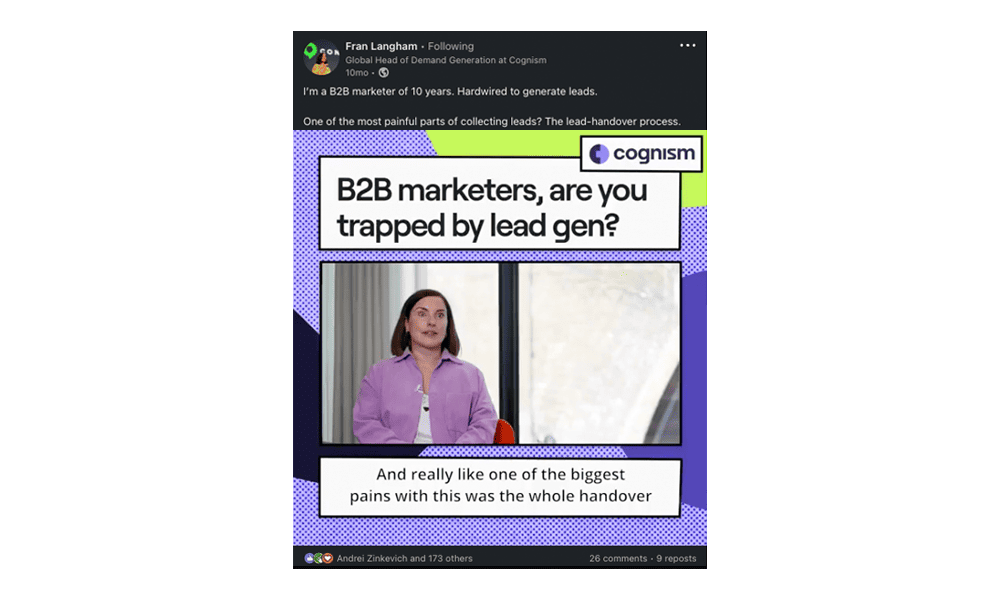
When it comes to LinkedIn content, there are many ways to approach native content creation for LinkedIn. One of the most common challenges that we observe, especially with busy stakeholders, is that they have little time or the skills to become LinkedIn content creators.
To aid these challenges, the services of a ghostwriter could prove invaluable (and is popular amongst start-up founders and entrepreneurs). These are particularly helpful for people who don’t believe they have great copywriting skills or who simply don’t understand the intricacies of LinkedIn. At Torpedo, we can help you craft LinkedIn content that resonates with your audience.
However, if you’d like to give it a go yourself, here are the most effective LinkedIn content frameworks to help you get started…
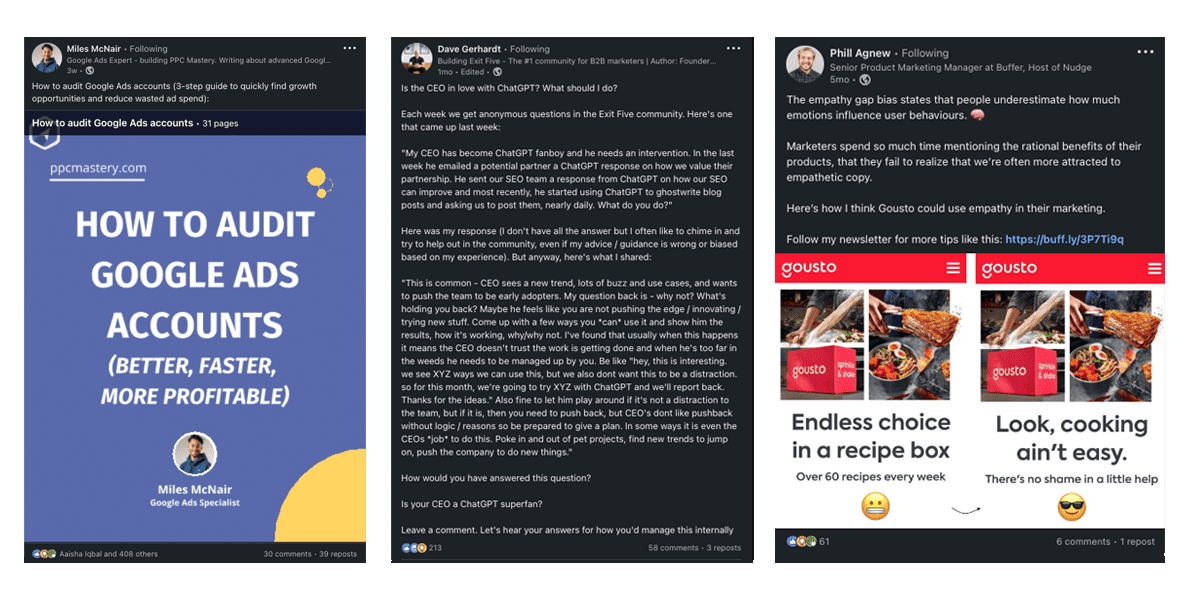
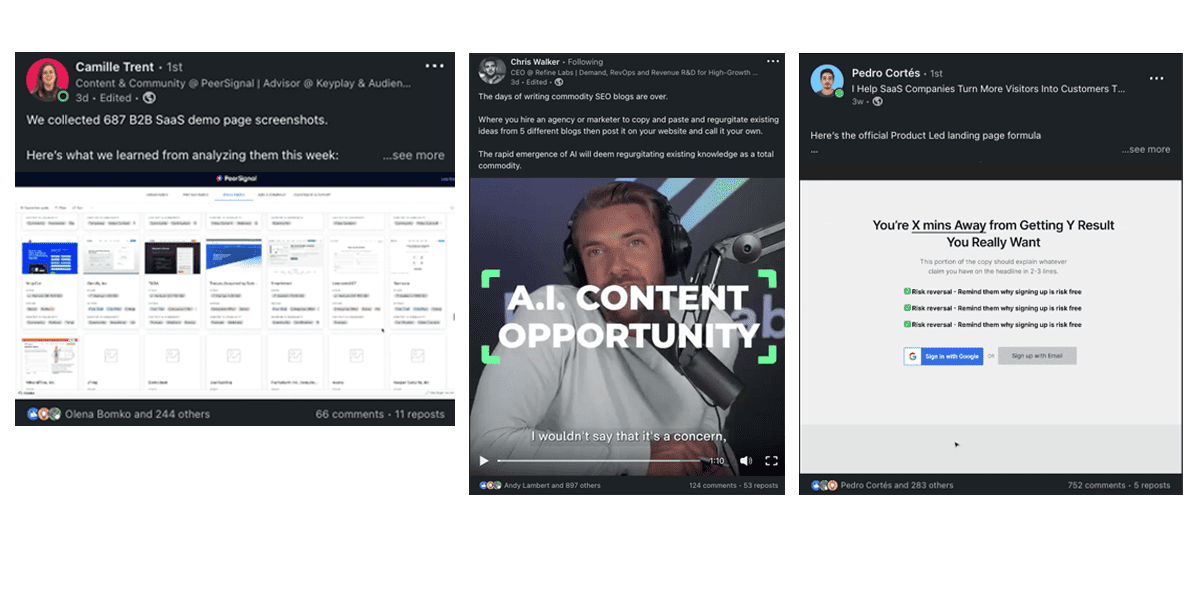
Michael G. Scott, the infamous Regional Manager of a fictional B2B paper company, Dunder Mifflin (The Office nerd alert!), once said: “People will never be replaced by machines. In the end, life and business are about human connections. And computers are about trying to murder you in a lake. And to me, the choice is easy.”
Today, this is more relevant than ever. With all the buzz around AI and new technologies, it’s harder than ever for people to create meaningful interactions.
The same goes for building business relationships. Chances are, your prospects already feel overwhelmed with the amount of information they are being exposed to every day, especially when it comes to B2B content. White papers, ebooks, and webinars are perfect for self-conducted research towards the bottom of the funnel. However, when it comes to learning about the brand, your prospects are more likely to rely on personal recommendations or engaging with something interesting that they saw on their LinkedIn wall.
With LinkedIn, the real power of the personal brand lies in those one-to-one interactions that you make with your audience.
Don’t just reply to comments shared by your audience but also comment on posts your prospects are sharing, to give your profile an immediate boost. You can also continue interesting conversations via direct messages – which could be a great start to a business relationship.
It’s important to always remember that LinkedIn engagement is a two-way street. A common mistake seen with LinkedIn creators is that they often rely on others to follow and engage with their content. In reality, they should be proactively reaching out to others. There isn’t much point in creating content if no one knows you exist. Therefore, it’s incredibly important that you comment on other users’ posts to gain visibility of your own profile (did I also mention how much you can learn from them?!).
Below: Peep Laja is an excellent example of how to interact with the audience and provide added value. Source: LinkedIn.
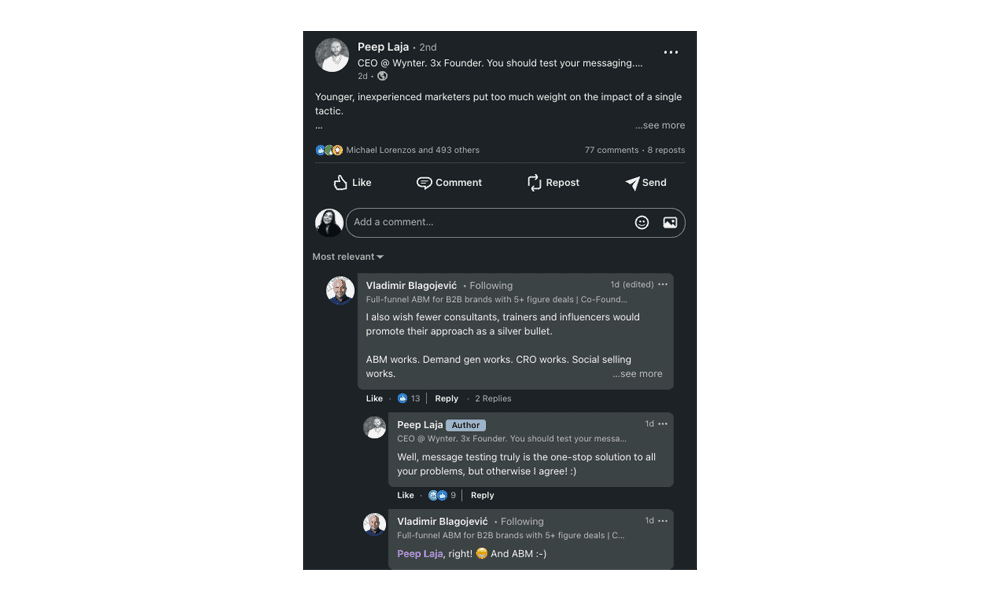
It’s a known fact that social media users engage more with personal content than they do with company updates, which is why many businesses have now deployed employee advocacy programs to organically distribute branded content via their employees personal accounts.
LinkedIn recommend this strategy: “People follow brands on LinkedIn, but they engage with the people behind those brands. Encourage your employees to become advocates and ambassadors for your LinkedIn presence – when an admin posts on their Page, 30% of the engagement comes from their employees, who are 14x more likely to share that content vs. other content types.”
LinkedIn quickly recognised this opportunity as they now provide all the tools you need to leverage the power of employee advocacy via the My Company tab. This means that business employees can use the tab to share posts curated by the marketing team and join in on important conversations.
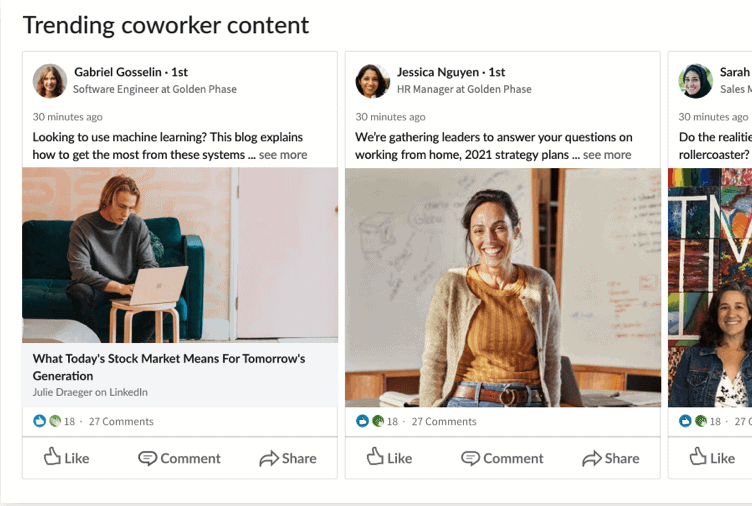
If the content creation ideas above sound great, but you need some expertise in setting up or boosting your LinkedIn personal brand, the Digital Marketing Team at Torpedo can help. Our in-house experts can conduct an audit of your profile, work with you to create a LinkedIn/Personal Branding strategy, generate engaging content, and define your LinkedIn presence to help you get the best results possible as part of a highly effective B2B lead generation strategy.

As well as establishing your personal brand, we can also incorporate a highly effective B2B lead generation strategy.
Get in touch